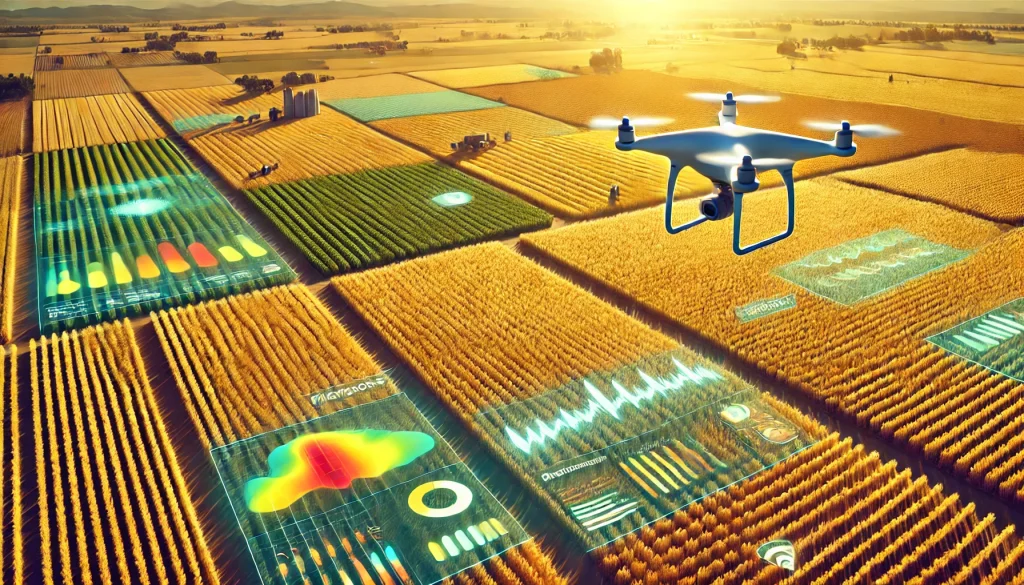Australia’s agricultural sector is on the cusp of a technological boom, harnessing sensor-based monitoring, AI-driven decision-making, and sophisticated robotics to optimize yields and preserve resources. This ag-tech revolution extends across the continent – from the outback’s vast cattle stations to high-tech horticulture near major cities. Below, we examine how Aussie farmers push the envelope, aided by research institutions and global partners, and we profile the Dickens family, a prime success story in modernizing sustainable operations.
1. Why Australia’s Geography Spurs Ag-Tech Innovation
1.1 Extreme Climate & Vast Landscapes
- Diverse Conditions: From arid deserts to tropical zones, Australian agriculture faces intense weather variability.
- Resource Management: Limited water supplies in some regions force farmers to adopt advanced irrigation and soil monitoring systems for efficiency.
- Distance Constraints: Remote properties rely on remote sensing or drone surveys to handle day-to-day tasks, bridging the labor gap.
Outcome: Australia’s unique challenges drive tech adoption that’s often pioneering new solutions, from solar-powered sensors to automated cattle feeders.
1.2 Government & Industry Support
- R&D Funding: Aussie agencies and universities invest heavily in agricultural research, funneling money toward projects that refine drone usage, AI analytics, or advanced genetics.
- Ag-Tech Hubs: Regions like Toowoomba in Queensland or Wagga Wagga in New South Wales host innovation hubs, connecting startups and local farmers.
Key: Collaboration among institutions, private ventures, and producers fosters a dynamic environment for testing and scaling fresh ag-tech ideas.
2. Sensor-Based Cattle Monitoring

2.1 Real-Time Location & Health Tracking
- GPS Collars: Large-scale cattle stations deploy collars or ear tags with GPS, letting ranchers see movements in real time.
- Activity Sensors: Track feeding patterns, rest periods, or unusual behaviors that might signal sickness or heat stress.
Benefit: Minimizing manual musters in remote areas, ensuring faster response if an animal’s location or health deviates significantly.
2.2 Predictive Analytics
- AI-Driven Insights: Over time, ML models learn each herd’s baseline metrics, sending alerts if anomalies (e.g., an outbreak or fence break) occur.
- Automated Feeding Systems: Some farmers tie sensor data to feed dispensers, adjusting rations for optimal growth or finishing conditions.
Result: Higher animal welfare standards, resource efficiency, plus reduced labor overhead.
3. AI-Driven Crop Management

3.1 Drones & Satellite Imagery
- Precision Mapping: Multispectral drones identify nutrient deficits, pest hot spots, or water stress in real-time.
- Variable Rate Application: Instead of uniform fertilizer or pesticide usage, AI tools produce site-specific recommendations, cutting chemical usage and run-off.
Sustainability Factor: Minimizes environmental impacts by applying inputs only where needed, helping preserve soil health and biodiversity.
3.2 Machine Learning for Yield Prediction
- Historical Data & Weather: Advanced models ingest past harvests, local climate patterns, real-time sensor data to forecast yields.
- Crop Rotation Insights: Suggests best rotation schedules to maintain soil fertility, deter pests, or mitigate disease cycles.
Outcome: Farmers can plan logistics, marketing, and storage around predicted yields, mitigating waste or last-minute guesswork.
4. Success Story: The Dickens Family Farm
4.1 Integrating Tech Step by Step
- Background: The Dickens family runs a mixed sheep and cropping operation in western Victoria. Facing labor shortages and erratic rainfall, they turned to remote sensing and IoT solutions.
- Initial Setup: Deployed soil moisture sensors across paddocks, plus ear tags on sheep for location data.
Result: Spotted water distribution inefficiencies, adjusting irrigation zones with minimal labor. Gained real-time stock movement alerts, reducing hours spent manually checking fields.
4.2 AI Insights & Community Impact
- Drone Patrols: An AI-based drone swarm scans stubble fields for leftover seeds or weed patches, guiding targeted herbicide usage.
- Community Sharing: The Dickens family shares data with a local cooperative, letting neighbors apply similar solutions and lowering costs through group purchasing.
Outcome: This local synergy fosters best-practice adoption, drawing interest from tech startups seeking real-world test scenarios.
5. Global Influence of Aussie Ag-Tech
5.1 International Partnerships
- Exporting Know-How: Australian ag-tech solutions, tested in harsh conditions, attract global partners from Africa to South America.
- Joint Ventures: Collaborations with American or European drone manufacturers to refine software for drought-prone ranches.
Implication: Aussie labs are recognized as proving grounds for robust hardware and advanced analytics, building a reputation that extends beyond local shores.
5.2 Leading Environmental Standards
- Carbon-Neutral Goals: Aussie farmers adopting sensor-based irrigation and minimal-till methods can reduce carbon footprints, drawing attention from worldwide climate initiatives.
- Green Branding: Some producers see premium markets for “tech-savvy, eco-friendly” produce or meat, leveraging data to prove sustainability metrics.
Future: The synergy of advanced data, climate-friendly practices, and global marketing can place Australia at the forefront of eco-conscious farming.
6. Challenges & Next Steps
6.1 Connectivity & Infrastructure
- Rural Internet: Many remote areas still rely on spotty connections, limiting real-time data usage. Satellite or private networks are bridging the gap, but cost remains high.
- Power Supply: In extremely remote zones, sensor networks must run on solar or wind microgeneration, requiring robust backup solutions.
6.2 Skills & Adoption
- Farmer Training: Not all farmers have the technical background to interpret ML dashboards or calibrate drones. Extension services or ag-tech consultants are crucial for widespread adoption.
- Cost Barriers: Some small-scale farms see advanced sensors or robotics as too expensive. Government grants or coop purchasing can help.
7. Looking Ahead: The Future of Aussie Ag-Tech
- Next-Gen Robotics: From weeding robots to orchard harvest bots, tasks once manual may soon be automated, offsetting labor shortages.
- Blockchain & Traceability: Tech linking sensor data to supply chains, guaranteeing authenticity and quality from field to plate.
- Climate Resilience: Advanced climate modeling integrated with day-to-day farm decisions can accelerate adaptation to extreme weather shifts.
Conclusion: Australia’s ag-tech revolution is well underway—driven by the Dickens family’s success stories, pioneering AI-based solutions, and a push for sustainable resource use. As these technologies mature, Aussie farms stand poised to lead global transformations in how we grow and manage food supplies, bridging the gap between efficiency, eco-consciousness, and a future-ready agriculture sector.










